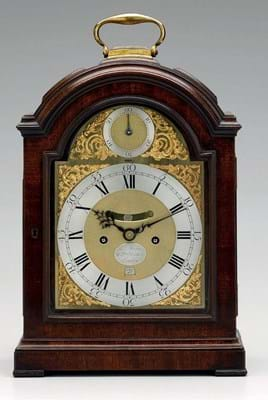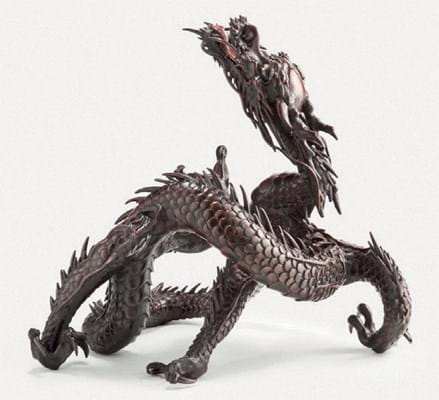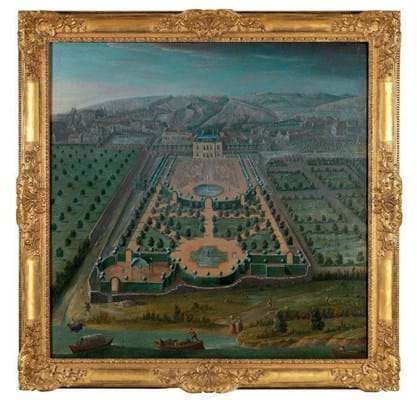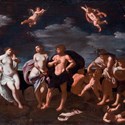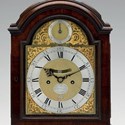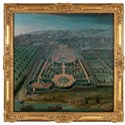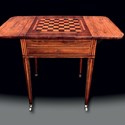A recently rediscovered copy of Guido Reni’s 17th century masterpiece Bacchus and Ariadne on the Island of Naxos made by Giovanni Francesco Romanelli (1610-62) is one of the leading pieces at BADA 2019.
Offered by fine art specialist Ottocento, this 1640 work is among a huge selection of art and antiques – more than 5000 objects in total – pitched to attract collectors and curators alike.
The annual fair from the British Antiques Dealers Association (BADA) hosts around 100 members from March 20-26 in Chelsea’s Duke of York Square and states its intent with its tagline: ‘Exceptional, without exception.’
Here it presents itself as a destination for top objects, many of which come from a top collection – and are ready to join another one now.
Take the remarkable painting from Ottocento, for example.
“It is not only a beautiful work but also part of a historical drama played out across Europe,” says the dealership’s Max Andrews.
“Romanelli was an important artist in his own right. Part of the appeal of this work is that it’s not a copy he would have done to make himself a better artist. It was directly commissioned by the pope or cardinal.”
Reni’s original mythological scene, completed in 1640, was completed for Henrietta Maria, wife of Charles I. It was organised by leaders of the Roman Catholic church – the pope and cardinals – to gain favour with the English monarchy, but turbulent times meant that it was left in Rome for safekeeping for several years. It was during this time that the pope sanctioned a few copies to be made, including the one in question by Romanelli.
By the time she finally received the original in 1647, the queen had been forced to flee to France in the wake of the English Civil War. Several years later, following the beheading of Charles I, she sold the painting. The buyer left it to his wife, who in later years had it sliced into fragments due to its scandalous subject matter and nudity.
“Today, copies are the only way to piece together the few fragments of the original that have shown up. It really is part of a jigsaw – and this particular piece has been missing for around 350 years,” Andrews says.
Andrea Emiliani, who curated a show on the original painting in Bologna last year, and an expert at the Wallace Collection worked with Andrews in the identification and attribution of Romanelli.
Clock partners
Meanwhile, antique clock specialist Tobias Birch brings a collection of his own making to the fair: an assemblage of 28 clocks and watches made by the famous Georgian partnership of Thomas Mudge (1715-94) and William Dutton (c.1720-94).
Built up over two years, the group includes a George III mahogany table clock from c.1770 as well as around seven watches, a regulator c.1775 and a c.1765 longcase clock designed by Mudge alone, making it a particularly rare and desirable piece.
Mudge and Dutton were apprenticed to George Graham (1673-1751) and formed their partnership in 1765. The relatively small number of works they produced were of the highest quality, featuring such innovations as the lever escapement – “really the only 18th century horological invention still in place today,” Birch says. They transformed the design of clocks, also, focusing on classical proportions in their own, ‘true Georgian’ style. Among their developments were pillarless longcases as well as three pad, arched-top spring clocks.
“It’s unusual to get so many Mudge and Dutton clocks in the same place,” says Birch, who has held back these pieces for the fair (often a difficult exercise, he adds). By showing the collection, he hopes both to excite existing horologists and inspire new buyers.
Mirror by Ashbee
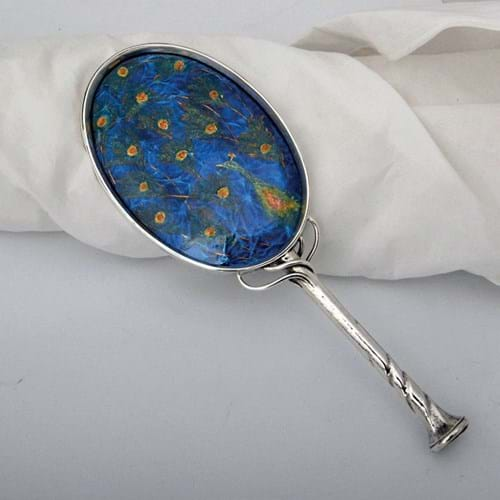
The Peartree Collection offers this Guild of Handicraft antique silver hand mirror by Charles Ashbee, which is backed with peacock enamel. Hallmarked for 1903, it is priced at a five-figure sum.
Those on the look-out for museum-level purchases might also seek Anthony Bernbaum of The Peartree Collection, who offers a Guild of Handicraft silver and enamel hand mirror by Charles Ashbee.
It features striking peacock enamel to the back and is hallmarked for 1903. Until now, the only other known example was in Cheltenham’s Wilson Museum.
The mirror is one of a number of pieces Bernbaum will exhibit by Ashbee and Archibald Knox, whom he describes as “two of the most collectable designers from the Arts & Crafts period around 1900”.
Pregnant pause

Early Oak at Wysdom Hall brings a 15th century carved figure of St Margaret of Antioch, 3ft 7in (1.09m) tall, which is offered for a price in the region of £20,000.
Elsewhere, Early Oak by Wysdom Hall offers a 15th century French walnut sculpture of St Margaret of Antioch, patron saint of pregnant women. According to legend, the saint was swallowed by Satan in the guise of a dragon but escaped when the cross she was carrying irritated its innards. Though the dragon is included in the bottom right, the sculpture is milder than the story.
“She has a very gentle look in her eyes,” says the dealership’s Tim Wilson. “Before 1400 sculptures could be a bit severe, but by bringing her knee forward under the folds of her dress she has a softer look.”
Measuring 3ft 7in (1.09m) high, it has been kept in good condition and burnished for many years.
“This would appeal to a collector of sculpture or to people who collect oak,” Wilson adds. “It’s an impressive piece that would look good on a wall.”
There is plenty more to be hunted out around the fair, and many other dealers to meet. For example, WW Warner Antiques brings porcelain, pottery and glass, Godson & Coles offers English period furniture and 20th century British art, and Sandra Cronan offers esoteric jewellery from the 17th century. Gray MCA will bring 20th century fashion illustration and Jonathan Cooper offers modern and contemporary art.
A special loan exhibition within the fair will showcase the works of Philip de László (1869-1937) on the 150th year since the artist’s birth.



